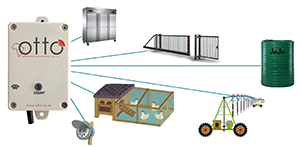

According to the LoRa Alliance’s official website, there are currently 156 LoRa network operators in 171 countries across the globe, with over 208 million LoRa devices deployed. Officially, we do have a few LoRa network operators in South Africa, but those same operators’ websites are completely devoid of any details and none appear to have a national footprint. It’s doubtful that more than a handful of the 208 million deployed devices are therefore in South Africa.
There is an abundance of hardware devices readily available, from nodes to gateways and a wide variety of sensors. These devices are either imported from overseas, or locally designed and manufactured. But they all seem to be homeless – innovative devices looking for niche, bespoke designs managed by single entities for a specific service delivery at a time.
Frustratingly, there are also numerous international cloud-based dashboards available, but they are not financially viable to use, unless one is deploying a large number of nodes. Most seem designed for end users, while expecting the end customer to write the software adaptors necessary to cater for the correct understanding and presentation of information delivered from each type of node.
This all culminates in a frustrating situation where there appears to be little in the way of a true national network and confusion when it comes to figuring out who will approve nodes for said network or who will ensure that nodes are correctly configured so as to ensure they do not congest the network. And in the middle are hardware providers, who have been patiently waiting for the local LoRa network to become available, in order to enable the much-anticipated hardware sales.
Enter Otto Wireless Solutions, which has collaborated with local designers to have locally designed nodes, including a universal node capable of being customised to almost any common requirement, manufactured and ICASA-approved. We have a healthy choice of ICASA-approved gateways catering for any practical requirement. All that is missing is the backend and for this we refer clients to a Cape Town-based software company which takes delivery of gateways, deploys them at client-specific locations and provides backend services.
Depending on the number of nodes purchased per location, the client pays the software entity a setup charge, which is lower than the cost of a gateway and all that is left is to deploy ICASA-approved nodes connected to ICASA-approved gateways.
This approach may sound ridiculously simple and frankly, it is and if history has taught us anything, it is that simple approaches often work well. Do we need to snap our fingers and have a full national network overnight, or is the approach of setting up the network based on customer needs and specific locations a solid and sensible option? Time will tell.
| Tel: | +27 11 791 1033 |
| Email: | [email protected] |
| www: | www.otto.co.za |
| Articles: | More information and articles about Otto Wireless Solutions |

© Technews Publishing (Pty) Ltd | All Rights Reserved